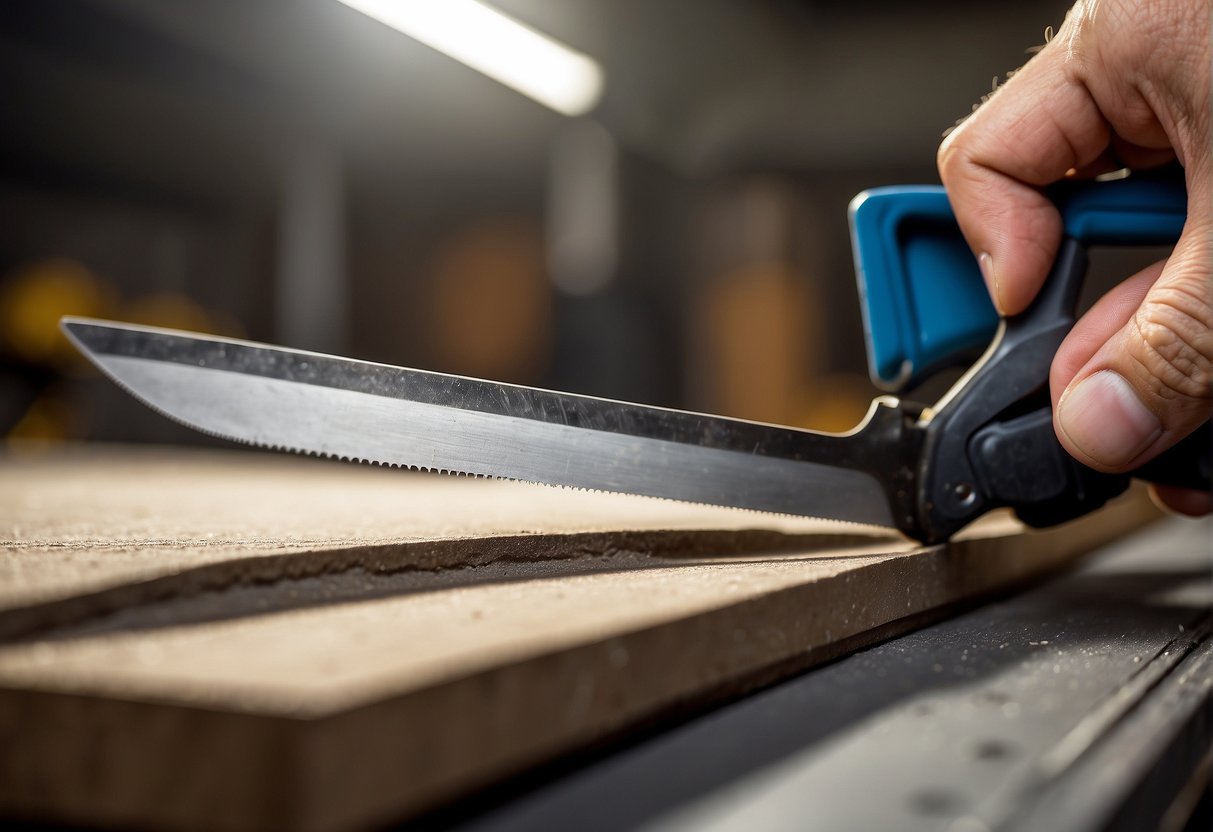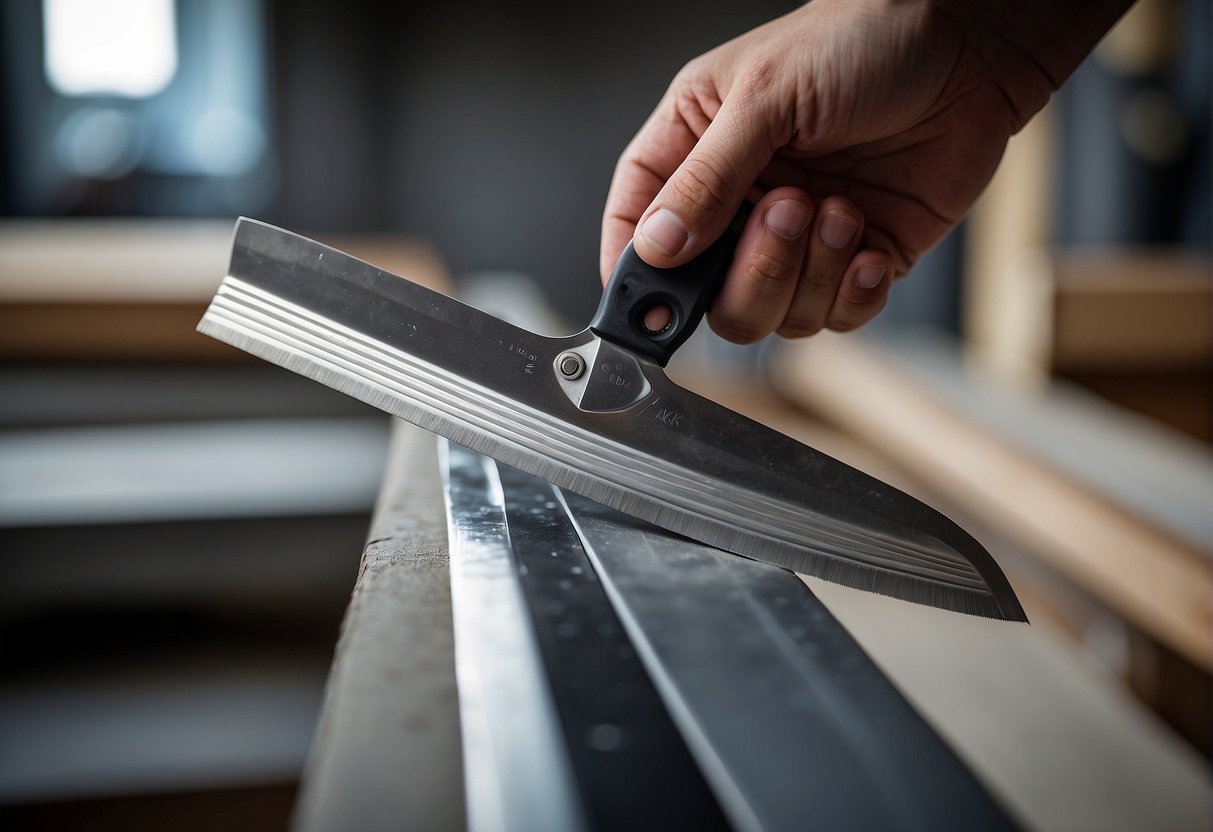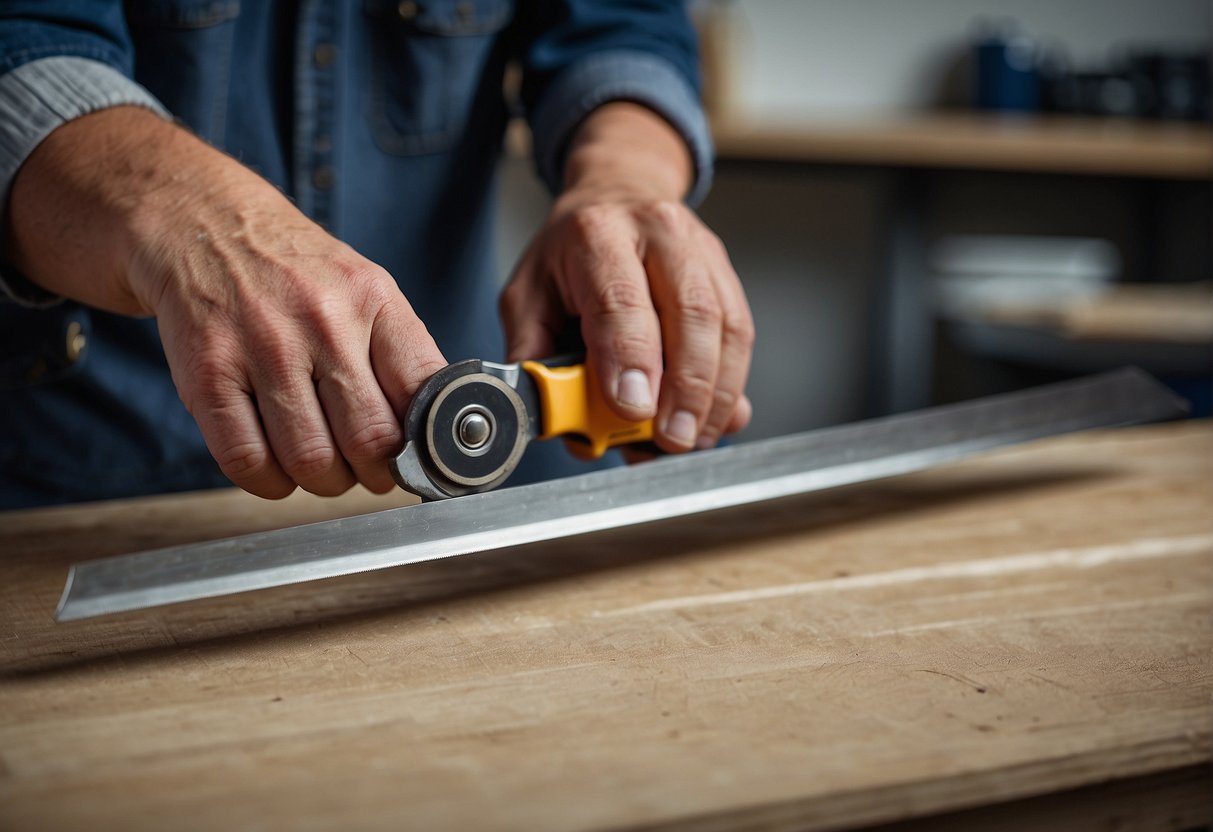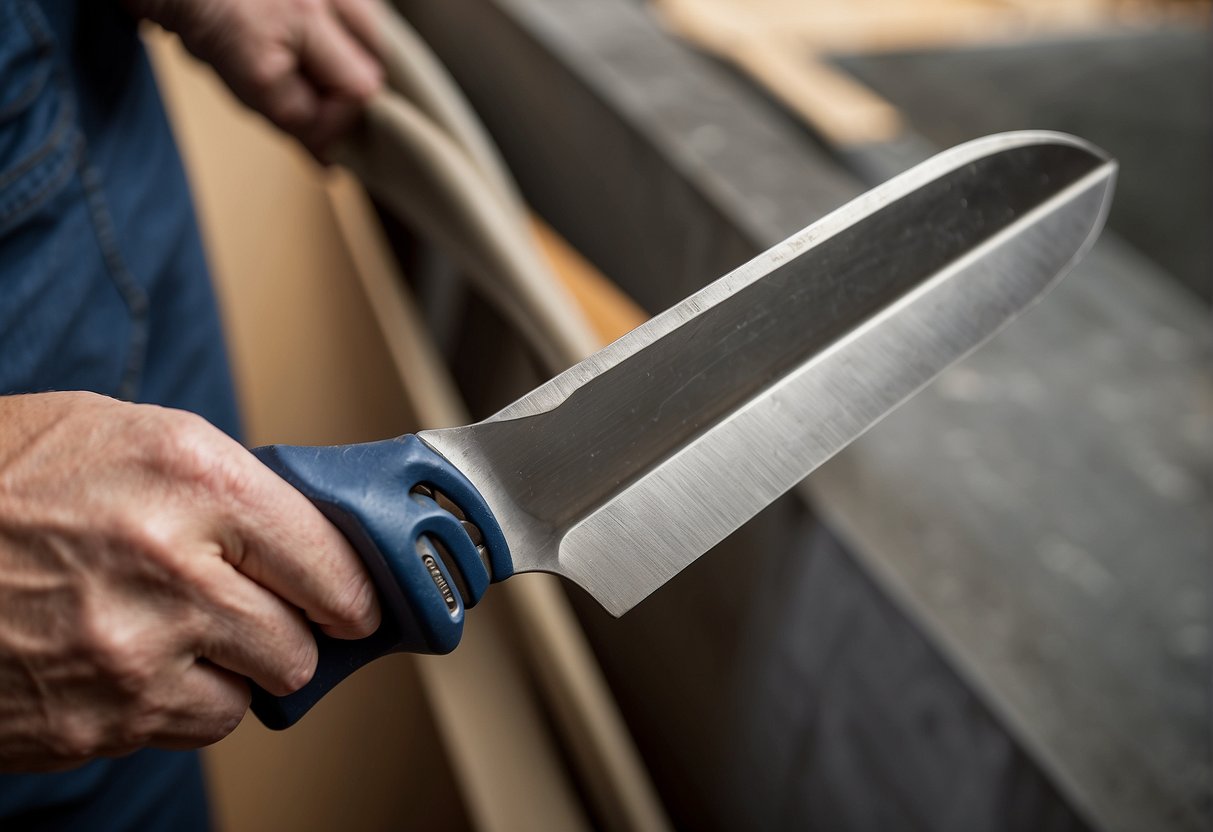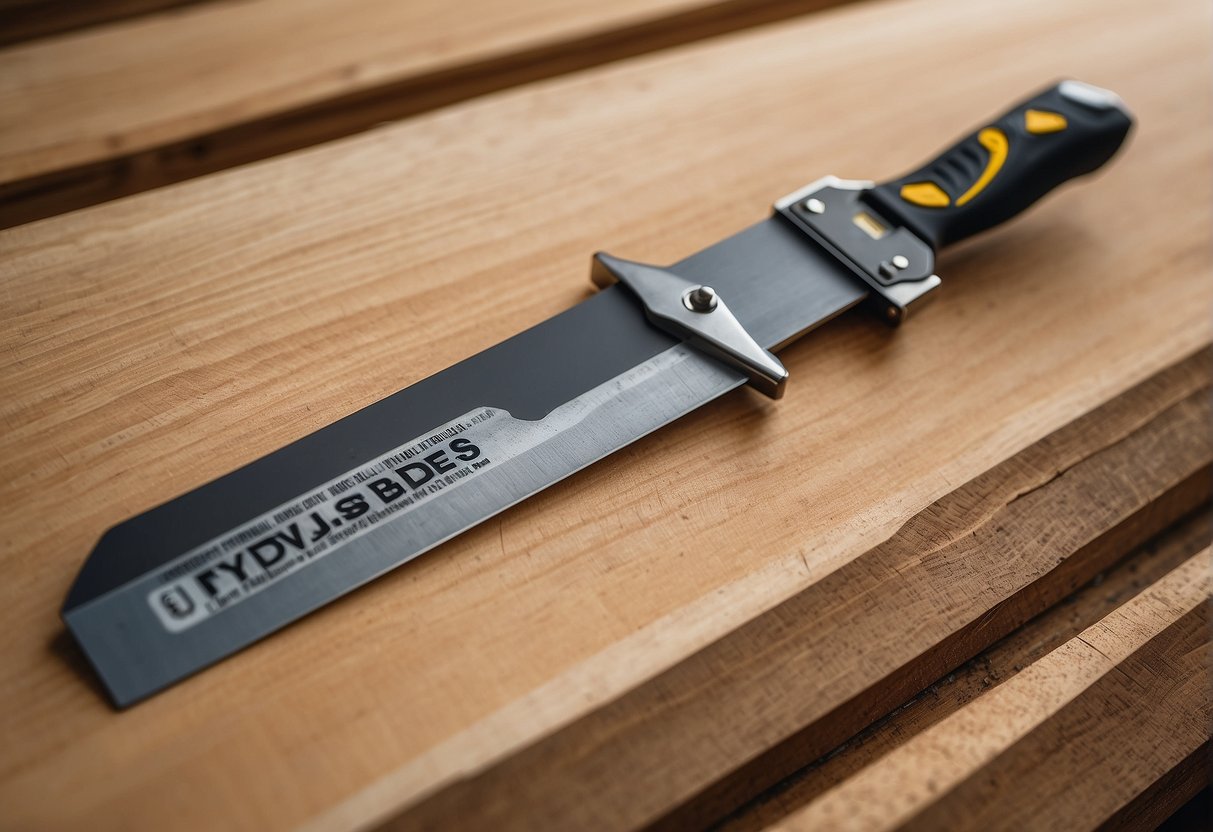Drywall installation is a common task for many professionals in the construction industry. To complete this task, it is essential to have the right tools on hand. One of the most important tools for cutting drywall is a blade, but with so many options available, it can be challenging to know which one to choose. Two popular choices are drywall blades and utility blades. In this article, I will discuss the differences between these two types of blades and provide practical tips for professionals.
Understanding Drywall Blades
Drywall blades are specifically designed for cutting drywall. They have a unique shape that allows them to slice through the material without tearing it. These blades are typically wider than utility blades, which makes them ideal for making long, straight cuts. They are also sharper than utility blades, which means they require less force to cut through the drywall.
Utility Blades Explained
Utility blades, on the other hand, are more general-purpose cutting tools. They are designed to cut a variety of materials, including carpet, plastic, and cardboard. Utility blades are thinner and more flexible than drywall blades, which makes them ideal for making curved cuts. They are also more durable than drywall blades, which means they can withstand more use and abuse.
Key Takeaways
- Drywall blades are specifically designed for cutting drywall, while utility blades are more general-purpose cutting tools.
- Drywall blades are wider and sharper, making them ideal for long, straight cuts, while utility blades are thinner and more flexible, making them ideal for curved cuts.
- When choosing a blade, it is important to consider the material and design of the blade, as well as practical tips for professionals and purchase considerations.
Understanding Drywall Blades
When it comes to cutting drywall, having the right blade for the job is essential. Drywall blades are specifically designed to cut through drywall with ease, making them the ideal tool for any drywall project. In this section, I will discuss the different types of drywall blades and how to select the right one for your project.
Types of Drywall Blades
There are several types of drywall blades available, each with its own unique features and benefits. The most common types of drywall blades include handheld drywall saws, keyhole saws, and snap-off blades.
Handheld drywall saws are the most traditional type of drywall blade and are commonly used by professionals. They feature a long, narrow blade with sharp teeth that are designed to cut through drywall quickly and efficiently. Handheld drywall saws are ideal for cutting large sections of drywall, as they can cover a lot of ground quickly.
Keyhole saws are another popular type of drywall blade. They feature a small, curved blade that is ideal for cutting holes in drywall for electrical outlets or light fixtures. Keyhole saws are also great for making small cuts in drywall, such as when trimming around doors or windows.
Snap-off blades are a newer type of drywall blade that are becoming increasingly popular. They feature a long, thin blade that can be snapped off in sections as it becomes dull. Snap-off blades are ideal for smaller projects or for cutting intricate shapes in drywall.
Selecting the Right Drywall Blade
When selecting a drywall blade, there are several factors to consider. The first factor is the size of the blade. Larger blades are ideal for cutting large sections of drywall, while smaller blades are better for more intricate cuts.
The second factor to consider is the type of blade. Handheld drywall saws are ideal for larger projects, while keyhole saws are better for smaller, more precise cuts. Snap-off blades are a good all-around option for general use.
Finally, it’s important to consider the quality of the blade. High-quality blades will last longer and cut more efficiently than lower-quality blades. When selecting a drywall blade, look for one that is made from high-quality materials and has a sharp, durable edge.
In summary, selecting the right drywall blade is essential for any drywall project. Whether you’re cutting large sections of drywall or making small, intricate cuts, there is a drywall blade that is right for your needs. By understanding the different types of drywall blades available and how to select the right one, you can ensure that your drywall project is a success.
Utility Blades Explained
Utility Knife Basics
Utility knives are multi-purpose cutting tools that are widely used in construction, DIY projects, and other applications. The knife consists of a handle and a retractable blade that can be locked in place for safety. The blade is usually made of high-carbon steel, stainless steel, or ceramic, depending on the manufacturer and the intended use.
The utility knife can be used for various tasks, such as cutting cardboard, paper, plastic, and other materials. It is also commonly used for cutting drywall, which is why it is sometimes referred to as a drywall knife. The blade can be easily replaced when it becomes dull or damaged, making the knife a cost-effective option for many users.
Advantages of Utility Blades
One of the main advantages of utility blades is their strength and durability. The blades are designed to withstand heavy use and can last a long time without needing to be replaced. This is particularly important for professionals who use the knife regularly and need a reliable tool that can handle tough jobs.
Another advantage of utility blades is their versatility. The blades can be used for a wide range of cutting tasks, from simple household chores to more complex construction projects. This makes the knife a valuable tool to have in any toolbox or workshop.
In addition to their strength and versatility, utility blades are also easy to use. The retractable blade can be adjusted to the desired length, and the blade can be locked in place for safety. This makes the knife a safe and efficient tool for cutting various materials.
Overall, utility blades are an essential tool for anyone who needs a reliable, versatile, and durable cutting tool. Whether you are a professional contractor or a DIY enthusiast, a utility knife is a valuable addition to your toolkit.
Comparing Cutting Tools
When it comes to cutting drywall, there are a variety of tools available. The two main categories of tools are manual and power tools. Each type of tool has its own advantages and disadvantages, and the choice between them depends on the specific needs of the job.
Manual vs. Power Tools
Manual tools are the most basic and straightforward option for cutting drywall. They include tools such as utility knives, keyhole saws, and drywall saws. These tools require physical effort to use and are generally slower than power tools. However, they are also more precise and can be used in tight spaces where power tools may not fit.
Power tools, on the other hand, are faster and more efficient than manual tools. They include tools such as rotary tools, spiral saws, reciprocating saws, and oscillating multi-tools. These tools are powered by electricity or batteries and can make quick work of cutting through drywall. However, they can also be more expensive and may require more maintenance than manual tools.
Corded vs. Cordless Options
Another factor to consider when choosing a cutting tool is whether to go with a corded or cordless option. Corded tools are generally more powerful and can run for longer periods of time. However, they require an electrical outlet and may be less portable than cordless tools.
Cordless tools, on the other hand, are more portable and can be used in areas without electrical outlets. They are also generally lighter and easier to maneuver than corded tools. However, they may not be as powerful as corded tools and may require more frequent charging.
Overall, the choice between manual and power tools and corded and cordless options depends on the specific needs of the job. For small, precise cuts, a manual tool may be the best choice. For larger cuts or more complex projects, a power tool may be more efficient. Similarly, for jobs in areas without electrical outlets, a cordless tool may be necessary.
Material and Design Considerations
Blade Materials
When it comes to blade materials, both drywall and utility blades are typically made from high-carbon steel. However, some utility blades may be made from stronger materials such as carbide or titanium, which can offer greater durability and edge retention. 1 Carbide blades, in particular, are known for their hardness and durability, but they can be brittle. 2 Titanium blades, on the other hand, are coated with a microthin layer of titanium-nitride, which makes them more resistant to wear and tear. 1
For heavy-duty tasks, such as cutting through thick drywall or other tough materials, it’s important to choose a blade that can withstand the pressure. Some brands, such as Milwaukee, DeWalt, and Stanley, offer heavy-duty blades that are designed to handle tough jobs. 1
Ergonomic and Safety Features
When selecting a blade for your project, it’s important to consider the design and safety features of the blade. For instance, some blades feature a bump switch that allows you to extend and retract the blade with one hand, reducing the risk of injury. 3
Other blades may feature ergonomic handles that reduce hand fatigue and strain, making it easier to work for longer periods of time. 1 Additionally, some blades may have a locking mechanism that keeps the blade securely in place when not in use, reducing the risk of accidental injury. 1
Ultimately, the choice between a drywall blade and a utility blade will depend on the specific task at hand. While drywall blades are designed for cutting through drywall, they may not be suitable for other tasks. Utility blades, on the other hand, are more versatile and can be used for a variety of cutting tasks. By considering the blade materials, ergonomic features, and safety features of each type of blade, you can select the best blade for your project.
Practical Tips for Professionals
Maximizing Blade Lifespan
As a professional, I know that replacing blades can be time-consuming and expensive. To maximize the lifespan of my blades, I always ensure that I am using the right blade for the task at hand. When cutting drywall, I prefer to use a drywall blade, as it is specifically designed for this material. Using a utility blade for drywall can dull the blade quickly and make it less effective for other tasks.
Another tip to extend blade life is to keep the blade clean and dry. After each use, I wipe down the blade with a dry cloth to remove any debris or moisture. This helps prevent rust and corrosion, which can also shorten the lifespan of the blade.
Tool Selection for Specific Tasks
When it comes to cutting sheet goods like plywood, I prefer to use a circular saw or an angle grinder with a diamond blade. These tools are powerful and efficient, making quick work of even the toughest materials. For cutting drywall, I prefer to use a drywall saw or an oscillating multi-tool kit with a drywall blade. These tools are more precise and allow for cleaner cuts.
When hanging drywall, I always use drywall screws instead of nails. Drywall screws provide a stronger and more secure hold, which is especially important in high-stress areas like ceilings. I also like to use an Amartisan hole cutter when working with drywall. This tool allows me to quickly and easily cut holes for electrical outlets and other fixtures.
Finally, when shopping for tools, I always keep an eye out for special offers and deals. Many retailers offer discounts on replacement blades and other accessories when you purchase a tool. By taking advantage of these deals, I can save money and ensure that I always have the right tool for the job.
Purchase Considerations
When choosing between drywall blades and utility blades, there are several factors to consider to ensure you get the best value for your money. Here are some important purchase considerations to keep in mind:
Price and Value
Price is an important consideration when purchasing any tool, and drywall blades and utility blades are no exception. Drywall blades are generally more expensive than utility blades, but they are also more specialized and designed for specific tasks. Utility blades, on the other hand, are more versatile and can be used for a variety of tasks beyond just cutting drywall.
When considering price, it’s important to also consider value. A higher-priced blade may be a better value in the long run if it lasts longer and performs better than a cheaper blade. Look for blades with special offers or discounts to get the best value for your money.
Brand and Warranty Options
When it comes to brands, there are several options to choose from, including Milwaukee, DeWalt, and Stanley. Each brand has its own strengths and weaknesses, so it’s important to do your research and choose a brand that meets your specific needs.
In addition to brand, it’s also important to consider warranty options. Look for blades with a warranty that covers defects or damage. This can help you save money in the long run if the blade needs to be replaced.
Overall, when choosing between drywall blades and utility blades, it’s important to consider your specific needs, budget, and the tasks you will be performing. By carefully considering these factors, you can choose a blade that offers the best value and performance for your needs.
Frequently Asked Questions
What is the difference between drywall blades and utility blades?
Drywall blades are specifically designed for cutting drywall. They have a unique shape that allows them to make precise cuts without damaging the drywall. On the other hand, utility blades are more general-purpose and can be used for a variety of tasks, such as cutting plastic, carpeting, and much more.
Can a utility knife be effectively used for cutting drywall?
While a utility knife can be used for cutting drywall, it is not the best tool for the job. Utility blades are not designed for cutting drywall, and using them can result in jagged edges and damage to the drywall. A drywall blade is a better option for cutting drywall because it is specifically designed for the task.
What are the benefits of using a drywall blade over a utility blade?
One of the main benefits of using a drywall blade over a utility blade is that it is specifically designed for cutting drywall. This means that it can make precise cuts without damaging the drywall. Additionally, drywall blades are often made from stronger materials than utility blades, which means that they can last longer and cut more efficiently.
How do carbide utility blades compare to titanium ones in terms of durability?
Carbide utility blades are known for their durability and can last up to 10 times longer than standard steel blades. Titanium blades are also durable, but they are not as long-lasting as carbide blades. However, titanium blades are often more affordable than carbide blades, which makes them a popular choice for many people.
What factors should be considered when choosing the thickness of a utility blade?
The thickness of a utility blade is an important factor to consider when choosing a blade. Thicker blades are generally more durable and can last longer than thinner blades. However, thicker blades can also be more difficult to control, which can result in less precise cuts. Thinner blades are easier to control but may not last as long as thicker blades.
What materials are commonly used to make utility knife blades?
Utility knife blades can be made from a variety of materials, including steel, carbon steel, stainless steel, and ceramic. Each material has its own unique properties and benefits. Steel blades are strong and durable, while carbon steel blades are known for their sharpness. Stainless steel blades are resistant to rust and corrosion, and ceramic blades are extremely sharp and long-lasting.
Footnotes

Hi, I’m Sal Muller of Tooltrip.com. My DIY experience led me to understand essential power tools for home projects. Tooltrip.com guides enthusiasts and professionals in choosing right tools for any job. I provide concise top tool reviews for easier, efficient DIY.


